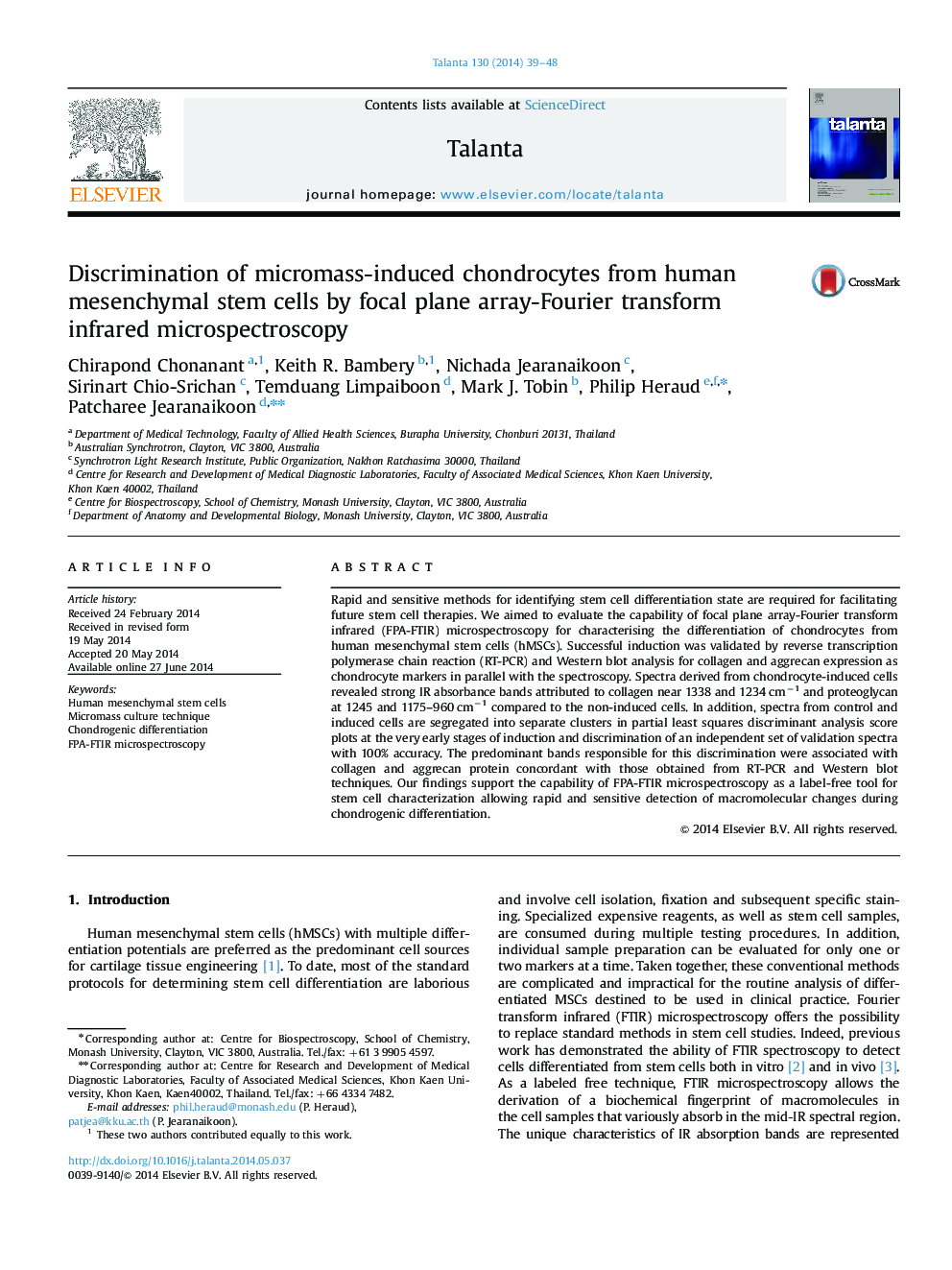| Article ID | Journal | Published Year | Pages | File Type |
|---|---|---|---|---|
| 1243558 | Talanta | 2014 | 10 Pages |
•Laboratory-based FPA-FTIR microspectroscopy was evaluated as a method to discriminate the differentiation state of chondrocytes derived from human mesenchymal stem cells.•FPA-FTIR microspectroscopy provided a rapid and sensitive detection of macromolecular changes during chondrogenic differentiation.•Spectra from control and induced cells could be discriminated at early stages of induction with excellent specificity and sensitivity.•Spectral discrimination attributed to two chrondrogenic markers; collagen and proteoglycan, was validated by parallel RT-PCR and Western blot analysis.
Rapid and sensitive methods for identifying stem cell differentiation state are required for facilitating future stem cell therapies. We aimed to evaluate the capability of focal plane array-Fourier transform infrared (FPA-FTIR) microspectroscopy for characterising the differentiation of chondrocytes from human mesenchymal stem cells (hMSCs). Successful induction was validated by reverse transcription polymerase chain reaction (RT-PCR) and Western blot analysis for collagen and aggrecan expression as chondrocyte markers in parallel with the spectroscopy. Spectra derived from chondrocyte-induced cells revealed strong IR absorbance bands attributed to collagen near 1338 and 1234 cm−1 and proteoglycan at 1245 and 1175–960 cm−1 compared to the non-induced cells. In addition, spectra from control and induced cells are segregated into separate clusters in partial least squares discriminant analysis score plots at the very early stages of induction and discrimination of an independent set of validation spectra with 100% accuracy. The predominant bands responsible for this discrimination were associated with collagen and aggrecan protein concordant with those obtained from RT-PCR and Western blot techniques. Our findings support the capability of FPA-FTIR microspectroscopy as a label-free tool for stem cell characterization allowing rapid and sensitive detection of macromolecular changes during chondrogenic differentiation.
Graphical abstractFigure optionsDownload full-size imageDownload as PowerPoint slide
